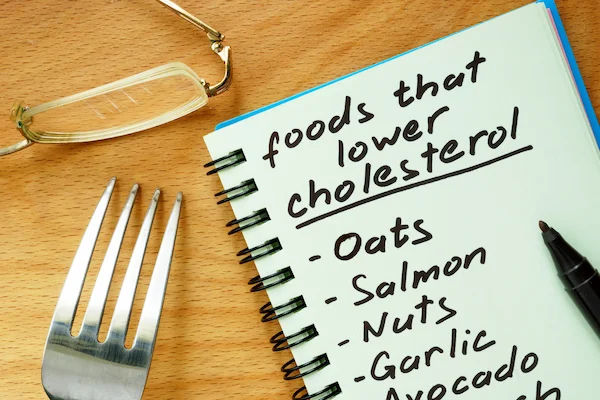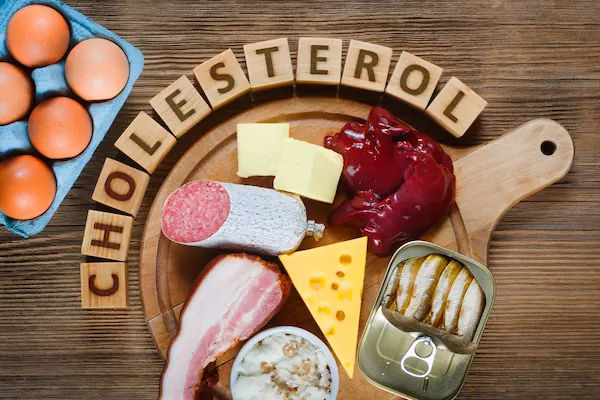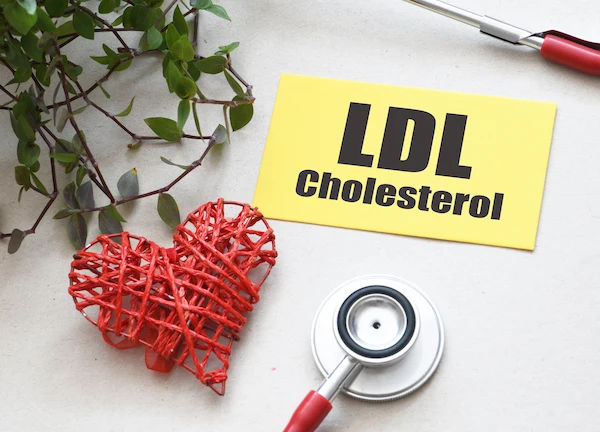Cholesterol Balancing: What to Take In and Out
Learn how to balance cholesterol with the right foods to eat and avoid, supporting heart health and overall well-being.

Written by Dr. Siri Nallapu
Reviewed by Dr. Dhankecha Mayank Dineshbhai MBBS
Last updated on 12th Oct, 2025

Introduction
Cholesterol often gets a bad rap, portrayed as a silent villain lurking in our food, threatening our health. But the truth is more nuanced. Your body actually needs cholesterol to build cells, make vitamins, and create hormones. The real issue isn't cholesterol itself, but the balance of different types in your bloodstream. So, is it a matter of taking cholesterol in or taking it out? The answer is both. It's about strategically reducing the harmful kinds while supporting the beneficial ones through smart dietary and lifestyle choices. This guide will demystify cholesterol, separating fact from fiction. We'll explore the foods that are secretly sabotaging your heart health and the powerful ingredients that can help you clean up the mess. By the end, you'll have a clear, actionable plan for mastering your cholesterol levels and taking a proactive step toward long-term vitality. If you're concerned about your cholesterol levels, consulting a doctor can provide personalised advice. Platforms like Apollo24|7 make it easy to connect with a healthcare professional online for an initial consultation.
Cholesterol: It’s Not Just a "Bad Guy"
Before we can manage cholesterol, we need to understand what it is. Imagine cholesterol as tiny packages of fat traveling through your bloodstream. Because blood is water-based and fat doesn’t mix with water, these packages need transporters called lipoproteins. This is where the terms "good" and "bad" cholesterol come from; it’s really about the transporters.
What exactly is Cholesterol?
Cholesterol is a waxy, fat-like substance produced primarily by your liver. Every cell in your body uses it. It's so essential that your body makes all it needs to function. The problem begins when we add excess cholesterol from our diet, particularly from certain types of foods, tipping the balance from healthy to harmful.
Meet the Lipoproteins: The Good (HDL), The Bad (LDL), and The Ugly (Triglycerides)
LDL (Low-Density Lipoprotein): Known as "bad" cholesterol, LDL carries cholesterol particles throughout your body. When there's too much LDL, it can build up on the walls of your arteries, forming hard plaques in a process called atherosclerosis. This narrows the arteries, making them less flexible and increasing the risk of blockages.
HDL (High-Density Lipoprotein): This is your "good" cholesterol. Think of HDL as the cleanup crew. It travels through your bloodstream, picking up excess LDL cholesterol and transporting it back to your liver, where it's broken down and removed from the body. High levels of HDL are protective.
Triglycerides: While not cholesterol, triglycerides are the most common type of fat in your body. They store excess energy from your diet. High levels of triglycerides, often linked to being overweight, a sugary diet, or excessive alcohol consumption, also contribute to arterial hardening.
Consult a Dietitian for the best advice
The Silent Alarm: Why High Cholesterol is a Major Health Threat
High cholesterol is often called a "silent" condition because it has no obvious symptoms. You can feel perfectly healthy while plaque steadily accumulates in your arteries for years. This makes understanding the risks and getting tested crucial.
How Excess LDL Cholesterol Harms Your Arteries
The danger lies in the slow, insidious process of atherosclerosis. As LDL cholesterol oxidises and infiltrates the artery wall, your body sends immune cells to contain it, creating a fatty streak. Over time, this streak grows into a plaque, a hard, thick deposit that narrows the artery's passageway. This restricts blood flow, forcing your heart to work harder.
The Real-World Consequences: Heart Attack and Stroke
The ultimate risk is a sudden blockage. If a plaque becomes unstable and ruptures, a blood clot can form around it. If this clot blocks blood flow to the heart, it causes a heart attack. If it blocks blood flow to the brain, it causes a stroke. According to the World Health Organization, high cholesterol is estimated to cause 2.6 million deaths annually worldwide. This stark reality underscores why managing your lipid profile is non-negotiable for long-term health.
The "Take Out" List: Foods to Limit or Avoid
The most direct way to influence your cholesterol levels is through your diet. The goal isn't to eliminate fat entirely but to drastically reduce the types that raise your LDL.
Saturated Fats: The Primary Culprit
Saturated fats are the main dietary driver of high LDL cholesterol. They are typically solid at room temperature. The American Heart Association recommends that saturated fats make up no more than 5-6% of your total daily calories.
Common Sources of Saturated Fats:
Red Meat: Beef, lamb, pork
Processed Meats: Sausages, hot dogs, bacon
Full-Fat Dairy: Butter, cream, cheese, whole milk
Lard and Tropical Oils: Coconut oil, palm oil
Trans Fats: The Worst Offender (and How to Spot Them)
Trans fats are artificially created through an industrial process that adds hydrogen to vegetable oil. They are a double whammy: they raise your LDL and lower your HDL. Many countries have banned them, but they can still be found in some products. Check ingredient lists for "partially hydrogenated oils."
Common Sources: Fried foods, shortening, margarine, and many commercially baked pastries, crackers, and cookies.
Dietary Cholesterol: Understanding the New Guidelines
For decades, foods high in dietary cholesterol, like eggs and shellfish, were strictly limited. Recent research, however, shows that for most people, saturated and trans fats have a much greater impact on blood cholesterol than dietary cholesterol itself. While moderation is still key, for many, enjoying an egg a day can be part of a healthy diet. The focus should remain on reducing saturated fats.
The "Take In" List: Cholesterol-Lowering Power Foods
Now for the good news! You can actively fight high cholesterol by incorporating specific, delicious foods that help lower LDL cholesterol naturally.
Soluble Fibre: Your Digestive System’s Broom
Soluble fibre dissolves in water to form a gel-like substance in your gut. This gel binds to cholesterol particles and prevents them from being absorbed into your bloodstream, carrying them out of your body instead.
Top Sources of Soluble Fibre:
Oats and Barley: Start your day with oatmeal.
Legumes: Beans, lentils, and chickpeas.
Fruits: Apples, citrus fruits, strawberries.
Vegetables: Brussels sprouts, avocados, and sweet potatoes.
Unsaturated Fats: The Heart-Healthy Heroes
Replacing saturated fats with unsaturated fats is a winning strategy. These fats help reduce LDL levels and may increase HDL.
Sources of Monounsaturated and Polyunsaturated Fats:
Oils: Olive oil, canola oil, sunflower oil.
Nuts and Seeds: Almonds, walnuts, flaxseeds, chia seeds.
Avocado: A fantastic source of monounsaturated fat.
Fatty Fish: Salmon, mackerel, and sardines are rich in omega-3 fatty acids, a type of polyunsaturated fat that benefits heart health.
Plant Sterols and Stanols: Nature’s Cholesterol Blockers
These are compounds found in plants that have a structure similar to cholesterol. They compete with cholesterol for absorption in the digestive system, effectively blocking it. They are added to some foods like certain margarines, orange juices, and yoghurts, and are also found naturally in small amounts in vegetables, fruits, and nuts.
Beyond the Plate: Lifestyle Factors That Move the Needle
Diet is powerful, but it's only one piece of the puzzle. A holistic approach is essential for optimal cholesterol management.
The Role of Physical Activity
Regular exercise is a proven way to raise HDL ("good") cholesterol. Aim for at least 150 minutes of moderate-intensity aerobic exercise (like brisk walking, cycling, or swimming) per week. Exercise also helps with weight management and strengthens your heart muscle.
Weight Management and Cholesterol
Carrying excess weight, especially around the abdomen, can increase LDL and triglycerides while lowering HDL. Losing even 5-10% of your body weight can significantly improve your cholesterol numbers.
The Impact of Smoking and Alcohol
Smoking: Damages the walls of your blood vessels, making them more susceptible to plaque accumulation. It also lowers your HDL cholesterol. Quitting is one of the best things you can do for your heart.
Alcohol: In moderation (one drink per day for women, two for men), alcohol may slightly raise HDL. However, excessive drinking harms the liver and heart, skyrocketing triglycerides and blood pressure.
Knowing Your Numbers: When to Get Tested
You can't manage what you don't measure. A simple blood test called a lipid panel is the only way to know where you stand.
Understanding Your Lipid Panel Report
The test measures:
Total Cholesterol: A composite score.
LDL Cholesterol: Your primary target for lowering.
HDL Cholesterol: Your target for raising.
Triglycerides.
General guidelines for adults (measured in milligrams per decilitre, or mg/dL) are:
LDL: Less than 100 mg/dL is optimal.
HDL: 60 mg/dL or higher is considered protective.
Triglycerides: Less than 150 mg/dL is desirable.
Risk Factors That Mean You Should Get Checked Sooner
Adults should get a baseline test at age 20 and then every 4 to 6 years. However, if you have risk factors like family history of heart disease, diabetes, high blood pressure, or if you smoke, you should be tested more frequently. For convenience, services like Apollo24|7 offer home collection for lipid profile tests, making it easier to stay on top of your health.
Get Your Health Assessed
Conclusion
Managing your cholesterol isn't about a restrictive diet; it's about making smarter, more strategic choices. It’s a lifelong balancing act of "taking out" the harmful elements like saturated fats and sedentary habits, and "taking in" the powerful allies found in fibre-rich plants, healthy fats, and regular activity. By understanding the roles of LDL and HDL, you can move from a place of fear to one of empowerment. Remember, high cholesterol is largely manageable and often reversible. Start with one change; maybe swapping your cooking oil or adding a daily walk and building from there. Your heart is your most vital muscle; fuel it and protect it with the knowledge you've gained today.
Consult a Dietitian for the best advice
Consult a Dietitian for the best advice

Ms. Sushma Jaiswal
Dietician
42 Years • M.Sc.(Food & Nutrition)
Bengaluru
Swasthya Nutrition, Bengaluru

Ms Malabika Datta
Dietician
19 Years • Bsc (Clinical Nutrition & Dietetics), Msc (Dietetics & Food Service Management)
Kolkata
Malabika’s Diet Clinic, Kolkata

Neelanjana J
clinical nutrition
3 Years • Bsc., Msc. Nutrition and Dietetics.
Bengaluru
Apollo Clinic, JP nagar, Bengaluru

Dr Darshana R
General Physician/ Internal Medicine Specialist
15 Years • MBBS, MD, DNB (Internal Medicine), Diploma in Allergy, Asthma and Immunology , Fellowship in Diabetes
Bengaluru
Apollo Clinic, JP nagar, Bengaluru
Ms Chetu Singhi
Dietician
20 Years • MSC Dietetics & Nutrition
Kolkata
RB Diagnostic - Dietician Diet2fit Chetu Singhi, Kolkata





